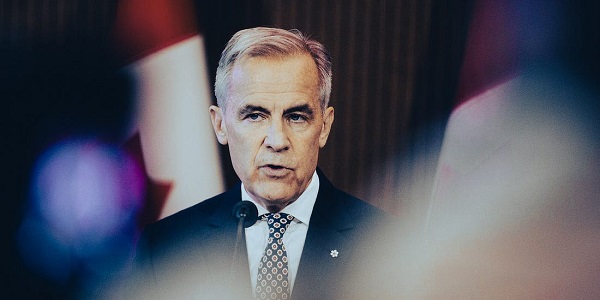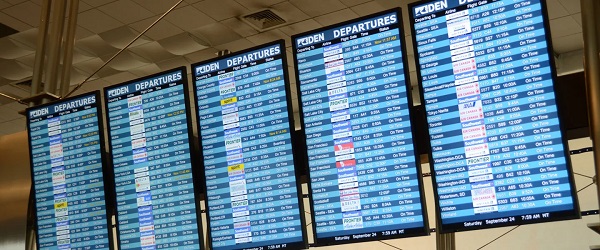Energy
Tech giants’ self-made AI energy crisis

For years tech giants have been helping climate catastrophists shut down reliable fossil fuel electricity. Now the grid they’ve helped gut cannot possibly supply their growing AI needs.
|
|
For years tech giants have been helping climate catastrophists shut down reliable fossil fuel electricity, falsely claiming they can be replaced by solar/wind.
Now the grid they’ve helped gut can’t supply their growing AI needs.¹
- For the last decade, tech giants such as Apple, Microsoft, Meta, and Google have, through dedicated anti-fossil-fuel propaganda and political efforts, promoted the shutdown of reliable fossil fuel power plants in favor of unreliable solar and wind.
- Tech giants have propagandized against reliable fossil fuel power plants by falsely claiming to be “100% renewable” and implying everyone could do it. In fact, they have just paid utilities to credit them for others’ solar and wind use and blame others for their coal and gas use.²
- In addition to their “100% renewable” propaganda, tech giants directly endorsed people and policies who shut down reliable fossil fuel power plants.E.g., The RE100 coalition, including Google, Apple, Meta, and Microsoft, advocates for policies to “accelerate change towards zero carbon grids at scale by 2040.”³
- Companies’ propaganda that solar/wind could rapidly replace fossil fuels has proven false.
Statewide blackouts in California (2020) and Texas (2021) were caused by the failure of solar/wind—which can go near zero at any time—to make up for lack of reliable fossil fuel capacity.
- Thanks in significant part to tech giants’ advocacy, we have now shut down enough reliable power plants to be in a nationwide electricity crisis.
For example, most of North America is at elevated/high risk of electricity shortfalls between 2024-2028.⁴
- The anti-fossil-fuel, pro-unreliable solar and wind political climate that tech giants have fostered is getting much worse, as the Administration has pledged to further reduce reliable electricity supply via power plant shutdowns and add artificial demand through EV mandates.
Biden’s EV mandate: a dictatorial attack on the American driver and the US grid
·APR 22Biden’s de facto mandate of over 50% EVs by 2032 is a dictatorial attack on the American driver and the US grid that will 1. Force Americans to drive inferior cars. 2. Place massive new demand for reliable electricity on a grid that is declining in reliable electricity supply.
Read full story - While for years tech giants didn’t seem to have any concern about the electricity supply disaster their propaganda and policies were bringing about, they are now very interested because of the accelerating power requirements of computing, above all the hyper-competitive AI space.
- To function at its potential, AI requires massive amounts of power. E.g., state-of-the-art data centers can require as much electricity as a large nuclear reactor.⁵
- Electricity demand from US data centers already doubled between 2014 and 2023. Now with the fast growth of energy-hungry AI, demand from data centers could triple from 2.5% to 7.5% of our electricity use by 2030, according to Boston Consulting Group.⁶
- In large part due to AI, nationwide electricity demand is projected to skyrocket. Official 10-year projections for the US have summer and winter peak demand rising by over 79 gigawatt and over 90 gigawatt. 90 gigawatt is equivalent to adding the entire power generating capacity of California (!)⁷
- Given the woeful underpowered grid that AI giants have helped bring about, dramatically rising demand from AI will not only contribute to massive electricity shortages, but it will also destroy a lot of potential for AI to occur in the United States.
- Limited and expensive electricity will force data centers to operate with higher cost or lower capacity within the US—or take a performance hit in the form of increased latency (which can drastically reduce the value of the product) by moving offshore.
- Not only is offshoring data centers destructive from an economic standpoint, it also poses a substantial security risk. E.g., Building a data center in China—which we already depend on dangerously for critical minerals—gives the CCP physical power over more parts of our economy.
- Economically, data centers are a gold mine of opportunities.Globally, data centers employed 2M people full-time in 2019, many in high-skill/high-pay jobs—and this number is forecast to increase nearly 300K by 2025.
Our gutted grid will cost many Americans these opportunities.⁸
- In the face of woefully inadequate electricity supply for their AI goals, tech giant CEOs are finally speaking up about the lack of power.
E.g., Meta CEO Mark Zuckerberg said in an interview that energy will be the #1 bottleneck to AI progress.
- It is not enough for tech giants to warn us about the lack of reliable power. They need to take responsibility for their anti-fossil-fuel advocacy that helped caused it. And they need to support energy freedom policies that allow all fuels to compete to provide reliable power.
End preferences for unreliable electricity
·DECEMBER 14, 2022Today’s grids are being ruined by systemic preferences for unreliable electricity: 1) no price penalty for being unreliable 2) huge subsidies for unreliables 3) mandates for unreliables Congress should end these now. The Opportunity America, given its combination of abundant domestic energy resources, technological ingenuity, and free-market competition, has …
Read full story - An example of a tech giant influencer not taking any responsibility for causing the electricity crisis is BlackRock CEO Larry Fink, who pushed companies and governments to adopt “net-zero” policies using mostly solar/wind, but now admits they can’t power AI data centers!
- A better attitude toward electricity was expressed by OpenAI CEO Sam Altman: “There will always be people who wait and sit around and say ‘we shouldn’t do AI because we may burn a little more carbon’… the anti-progress streak” and this “is something that we can all fight against.”⁹
- America faces a choice. We can either continue our current trajectory, descend into a Third World grid, and become totally inhospitable for AI, or we can adopt energy freedom policies and become a world leader in both AI and electricity.
- Share this article with tech giant CEOs and tell them to publicly apologize for damaging our grid and to commit to energy freedom policies.Google: @sundarpichai ([email protected])
Apple: @tim_cook ([email protected])
Meta: @finkd ([email protected])
Microsoft: @satyanadella ([email protected])
Michelle Hung contributed to this piece.
Popular links
- EnergyTalkingPoints.com: Hundreds of concise, powerful, well-referenced talking points on energy, environmental, and climate issues.
- My new book Fossil Future: Why Global Human Flourishing Requires More Oil, Coal, and Natural Gas—Not Less.
- Speaking and media inquiries
“Energy Talking Points by Alex Epstein” is my free Substack newsletter designed to give as many people as possible access to concise, powerful, well-referenced talking points on the latest energy, environmental, and climate issues from a pro-human, pro-energy perspective.
Alberta
Upgrades at Port of Churchill spark ambitions for nation-building Arctic exports

In August 2024, a shipment of zinc concentrate departed from the Port of Churchill — marking the port’s first export of critical minerals in over two decades. Photo courtesy Arctic Gateway Group
From the Canadian Energy Centre
By Will Gibson
‘Churchill presents huge opportunities when it comes to mining, agriculture and energy’
When flooding in northern Manitoba washed out the rail line connecting the Town of Churchill to the rest of the country in May 2017, it cast serious questions about the future of the community of 900 people on the shores of Hudson Bay.
Eight years later, the provincial and federal governments have invested in Churchill as a crucial nation-building corridor opportunity to get resources from the Prairies to markets in Europe, Africa and South America.
Direct links to ocean and rail

Aerial view of the Hudson Bay Railway that connects to the Port of Churchill. Photo courtesy Arctic Gateway Group
The Port of Churchill is unique in North America.
Built in the 1920s for summer shipments of grain, it’s the continent’s only deepwater seaport with direct access to the Arctic Ocean and a direct link to the continental rail network, through the Hudson Bay Railway.
The port has four berths and is capable of handling large vessels. Having spent the past seven years upgrading both the rail line and the port, its owners are ready to expand shipping.
“After investing a lot to improve infrastructure that was neglected for decades, we see the possibilities and opportunities for commodities to come through Churchill whether that is critical minerals, grain, potash or energy,” said Chris Avery, CEO of the Arctic Gateway Group (AGG), a partnership of 29 First Nations and 12 remote northern Manitoba communities that owns the port and rail line.
“We are pleased to be in the conversation for these nation-building projects.”
In May, Canada’s Western premiers called for the Prime Minister’s full support for the development of an economic corridor connecting ports on the northwest coast and Hudson’s Bay, ultimately reaching Grays Bay, Nunavut.
Investments in Port of Churchill upgrades
AGG, which purchased the rail line and port from an American company in 2017, is not alone in the bullish view of Churchill’s future.
In February, Manitoba Premier Wab Kinew announced an investment of $36.4 million over two years in infrastructure projects at the port aimed at growing international trade.
“Churchill presents huge opportunities when it comes to mining, agriculture and energy,” Kinew said in a release.
“These new investments will build up Manitoba’s economic strength and open our province to new trading opportunities.”
In March, the federal government committed $175 million over five years to the project including $125 million to support the rail line and $50 million to develop the port.
“It’s important to point out that investing in Churchill was something that both the Liberal and Conservative parties agreed on during the federal election campaign,” said Avery, a British Columbian who worked in the airline industry for more than two decades before joining AGG.
Reduced travel time
The federal financial support helped AGG upgrade the rail line, repairing the 20 different locations where it was washed out by flooding in 2017.
Improvements included laying more than 1,600 rail cars worth of ballast rock for stabilization and drainage, installing almost 120,000 new railway ties and undertaking major bridge crossing rehabilitations and switch upgrades.
The result has seen travel time by rail reduced by three hours — or about 10 per cent — between The Pas and Churchill.
AGG also built a dedicated storage facility for critical minerals and other commodities at the port, the first new building in several decades.
Those improvements led to a milestone in August 2024, when a shipment of zinc concentrate was shipped from the port to Belgium. It was the first critical minerals shipment from Churchill in more than two decades.
The zinc concentrate was mined at Snow Lake, Manitoba, loaded on rail cars at The Pas and moved to Churchill. It’s a scenario Avery hopes to see repeated with other commodities from the Prairies.
Addressing Arctic challenges
The emergence of new technologies has helped AGG work around the challenges of melting permafrost under the rail line and ice in Hudson Bay, he said.
Real-time ground-penetrating radar and LiDAR data from sensors attached to locomotives can identify potential problems, while regular drone flights scan the track, artificial intelligence mines the data for issues, and GPS provides exact locations for maintenance.
The group has worked with permafrost researchers from the University of Calgary, Université Laval and Royal Military College to better manage the challenge. “Some of these technologies, such as artificial intelligence and LiDAR, weren’t readily available five years ago, let alone two decades,” Avery said.
On the open water, AGG is working with researchers from the University of Manitoba to study sea ice and the change in sea lanes.
“Icebreakers would be a game-changer for our shipping operations and would allow year-round shipping in the short-term,” he said.
“Without icebreakers, the shipping season is currently about four and a half months of the year, from April to early November, but that is going to continue to increase in the coming decades.”
Interest from potential shippers, including energy producers, has grown since last year’s election in the United States, Avery said.
“We’re going to continue to work closely with all levels of government to get Canada’s products to markets around the world. That’s building our nation. That’s why we are excited for the future.”
Alberta
OPEC+ is playing a dangerous game with oil

This article supplied by Troy Media.
OPEC+ is cranking up oil supply into a weak market. It’s tried this strategy before, and it backfired
OPEC+ is once again charging headfirst into a market share war—a strategy that has repeatedly ended in disaster. Despite weak global demand, falling prices and rising output from non-OPEC countries, the cartel has chosen to flood the market. History shows this tactic rarely ends well for
OPEC+ or oil producers worldwide, including Canada.
OPEC+, a group of major oil-exporting countries led by Saudi Arabia and Russia, works together to manage global oil supply and influence prices. Its decisions have far-reaching consequences for the global energy market—including for Canadian oil producers.
Last Saturday, eight leading members of OPEC+ announced, after a virtual meeting, that they would increase production by 548,000 barrels per day starting in August. That is significantly more than the group’s recent additions of 411,000 bpd, and it puts them on track to fully unwind their
previous 2.2 million bpd in cuts a full year ahead of schedule.
It is a bold move, but it comes at a questionable time.
There is little geopolitical premium built into current oil prices, and the global market is already oversupplied. Brent crude futures are down more than six per cent so far this year. Analysts estimate inventories have been climbing by a million barrels per day in 2025 due in part to cooling demand in China and rising output from countries outside OPEC.
S&P Global Commodity Insights forecasts a supply surplus of 1.25 million barrels per day in the second half of the year. Brent crude stood at about US$68 per barrel on Friday, but S&P says it could fall to between US$50 and $60 later this year and into 2026. West Texas Intermediate, the U.S. benchmark, is also at risk of dropping below US$50 per barrel.
Canada is the world’s fourth-largest oil producer, with most of its output coming from Alberta’s oil sands. Though Canadian producers have higher costs than some OPEC+ members, their innovation and access to U.S. markets have made them increasingly competitive.
While the seasonal demand boost might justify a modest increase, OPEC+, especially Saudi Arabia, appears primarily motivated by market share concerns. With U.S. shale and countries like Canada, Kazakhstan and Guyana gaining ground, the cartel is falling back on its old tactic of flooding the market to squeeze out competitors.
Some observers, including Stanley Reed in The New York Times, have suggested that the move may be designed to please U.S. President Donald Trump, who “has made courting Saudi Arabia and regional allies like the United Arab Emirates a priority of his foreign policy.” But even geopolitical gamesmanship has not shielded OPEC+ from the consequences before—and likely will not this time either.
Back in 2014, fed up with the U.S. shale boom, OPEC opened the taps. The goal was to drive prices low enough to force out higher-cost producers. Instead, oil plunged into the US$30 range. According to the World Bank, the 70 per cent drop during that period was one of the three biggest oil crashes since the Second World War and the most prolonged since the supply-driven collapse of 1986. Saudi Arabia’s respected oil minister, Ali Al-Naimi, lost his job in the aftermath.
Then, in April 2020, as the COVID-19 pandemic loomed, OPEC and Russia launched a production war that sent oil prices into freefall, briefly into negative territory. Trump had to broker a ceasefire to rescue the U.S. shale industry, forcing Riyadh and Moscow to pull back. Both sides suffered significant economic damage.
For Canada, especially Alberta, the current fallout could be severe. The province is home to most of the country’s oil sands production. Cheaper global crude undercuts Canadian prices, squeezes royalty revenues, chills investment and puts jobs at risk across Canada. And this comes as governments are already grappling with fiscal pressures.
The oil market does not reward short-term thinking. If OPEC+ continues down this road, history suggests the outcome will be painful for them and the rest of us.
Toronto-based Rashid Husain Syed is a highly regarded analyst specializing in energy and politics, particularly in the Middle East. In addition to his contributions to local and international newspapers, Rashid frequently lends his expertise as a speaker at global conferences. Organizations such as the Department of Energy in Washington and the International Energy Agency in Paris have sought his insights on global energy matters.
Troy Media empowers Canadian community news outlets by providing independent, insightful analysis and commentary. Our mission is to support local media in helping Canadians stay informed and engaged by delivering reliable content that strengthens community connections and deepens understanding across the country
-

 National2 days ago
National2 days agoDemocracy Watch Blows the Whistle on Carney’s Ethics Sham
-

 Energy2 days ago
Energy2 days agoIs The Carney Government Making Canadian Energy More “Investible”?
-

 Business2 days ago
Business2 days agoCompetition Bureau is right—Canada should open up competition in the air
-

 Immigration2 days ago
Immigration2 days agoUnregulated medical procedures? Price Edward Islanders Want Answers After Finding Biomedical Waste From PRC-Linked Monasteries
-

 Business1 day ago
Business1 day agoDemocracy Watchdog Says PM Carney’s “Ethics Screen” Actually “Hides His Participation” In Conflicted Investments
-

 Business2 days ago
Business2 days agoIt’s Time To End Canada’s Protectionist Supply Management Regime
-

 COVID-192 days ago
COVID-192 days agoFreedom Convoy leaders’ sentencing hearing to begin July 23 with verdict due in August
-

 Addictions1 day ago
Addictions1 day agoAfter eight years, Canada still lacks long-term data on safer supply























